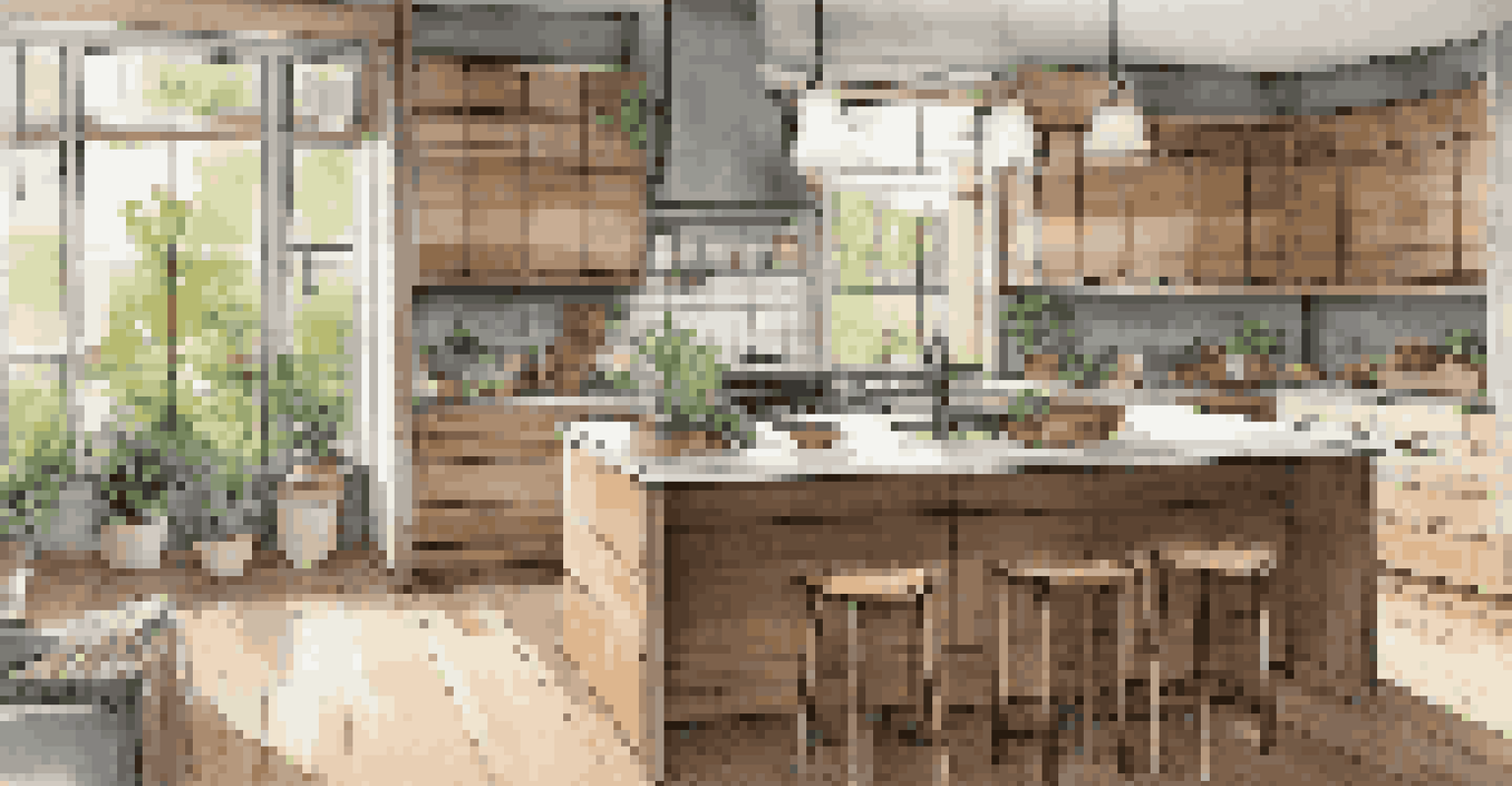Avoiding Common Mistakes in Selecting Renovation Styles

Understanding Your Home's Architecture Before Renovating
Before diving into any renovation project, it’s crucial to understand the architecture of your home. Each style has its unique characteristics, and respecting these can enhance the overall aesthetic. For instance, a Victorian home may not pair well with ultra-modern elements, as it could clash with its intricate details.
The details are not the details. They make the design.
Take time to study the existing features of your home. Look for elements like molding, window shapes, and roof lines that define its style. This awareness will help ensure that any renovations you undertake feel cohesive rather than mismatched.
By aligning your renovations with the architectural integrity of your home, you not only improve its appearance but also enhance its value in the long run.
Setting a Realistic Budget for Your Renovation Style
Budgeting is one of the most significant aspects of any renovation project. It’s easy to get carried away with grand ideas that can quickly drain your finances. Start by determining a realistic budget that considers both materials and labor, ensuring you leave room for unexpected expenses.

Consider prioritizing your renovation needs versus wants. For example, if you desire a high-end kitchen but also need new windows, decide which one will bring you the most value. This approach helps in making informed choices without compromising the quality of your renovation.
Understand Your Home's Architecture
Recognizing your home's architectural style ensures that renovations enhance its aesthetic and value.
Remember, a well-planned budget not only keeps you financially secure but also allows you to focus on the creative aspects of your project.
Choosing a Style That Complements Your Lifestyle
When selecting a renovation style, think about how it will fit into your daily life. For example, if you have young kids or pets, you might want to avoid delicate fabrics or finishes that could easily get damaged. Instead, opt for durable materials that can withstand the hustle and bustle of family life.
Simplicity is the ultimate sophistication.
Consider your hobbies and routines as well. If you love to cook, a functional kitchen layout with plenty of storage may be more beneficial than a trendy but impractical design. This ensures that your renovation truly enhances your living experience.
Ultimately, your home should reflect your lifestyle, making it comfortable and enjoyable for you and your family.
Researching Current Trends Without Losing Personal Touch
Staying updated on current design trends can be tempting, but it’s vital to balance these with your personal style. Trends come and go, but your home is a long-term investment. Instead of adopting every fad, choose elements that resonate with you and will stand the test of time.
For instance, if open floor plans are trendy but you prefer cozy, segmented spaces, don’t feel pressured to conform. Your home should be a reflection of your personality, not merely a showroom for passing styles.
Set a Realistic Renovation Budget
A well-planned budget helps balance your renovation desires with financial realities, allowing for creative freedom.
Mixing timeless features with a touch of current trends can create a unique space that feels both fresh and personal.
Evaluating the Functionality of Your Chosen Style
Functionality is just as important as aesthetics when selecting a renovation style. Each choice you make should serve a purpose and improve how you use your space. For instance, an open-concept layout may look appealing, but if it disrupts your daily activities, it may not be the best fit.
Think about how each area of your home will be used. If you enjoy entertaining, an updated kitchen that flows into a living area can be beneficial. Conversely, if you prefer quiet, private spaces, consider designs that create separate zones.
By prioritizing functionality, you ensure that your renovations meet your needs while still being visually appealing.
Consulting Professionals for Expert Insights
One of the best ways to avoid common mistakes in renovation is to consult with professionals. Architects, interior designers, and contractors can provide valuable insights based on their experience. They can help you navigate complexities and suggest solutions tailored to your vision and budget.
Don’t hesitate to ask questions or seek advice during the planning phase. A good professional will encourage open communication and collaboration, ensuring that your ideas align with practical realities.
Prioritize Functionality in Design
Choosing a renovation style that meets your functional needs ensures a comfortable living space tailored to your lifestyle.
Incorporating expert advice can save you time and money, making your renovation process smoother and more enjoyable.
Incorporating Sustainable Practices in Your Renovation
As we become more environmentally conscious, incorporating sustainable practices into your renovation can be both rewarding and stylish. Choose eco-friendly materials, energy-efficient appliances, and sustainable design practices to reduce your carbon footprint while enhancing your home’s appeal.
For example, reclaimed wood can add character to your space while being environmentally friendly. Additionally, consider installing solar panels or energy-efficient windows to lower utility costs and improve sustainability.

Embracing sustainable renovation not only benefits the environment but can also increase your home’s value and appeal to future buyers.
Finalizing Your Renovation Plan with Confidence
Once you've navigated through the various aspects of selecting your renovation style, it’s time to finalize your plan. Review all the insights you've gathered and ensure that your choices align with your vision, budget, and lifestyle. This is the moment to trust your instincts and feel confident in your selections.
Remember, renovations are a reflection of you. Don’t rush the decision-making process; take your time to ensure every detail is just right. This confidence will make the entire renovation journey more enjoyable.
With a solid plan in place, you're ready to embark on transforming your space into the home of your dreams.